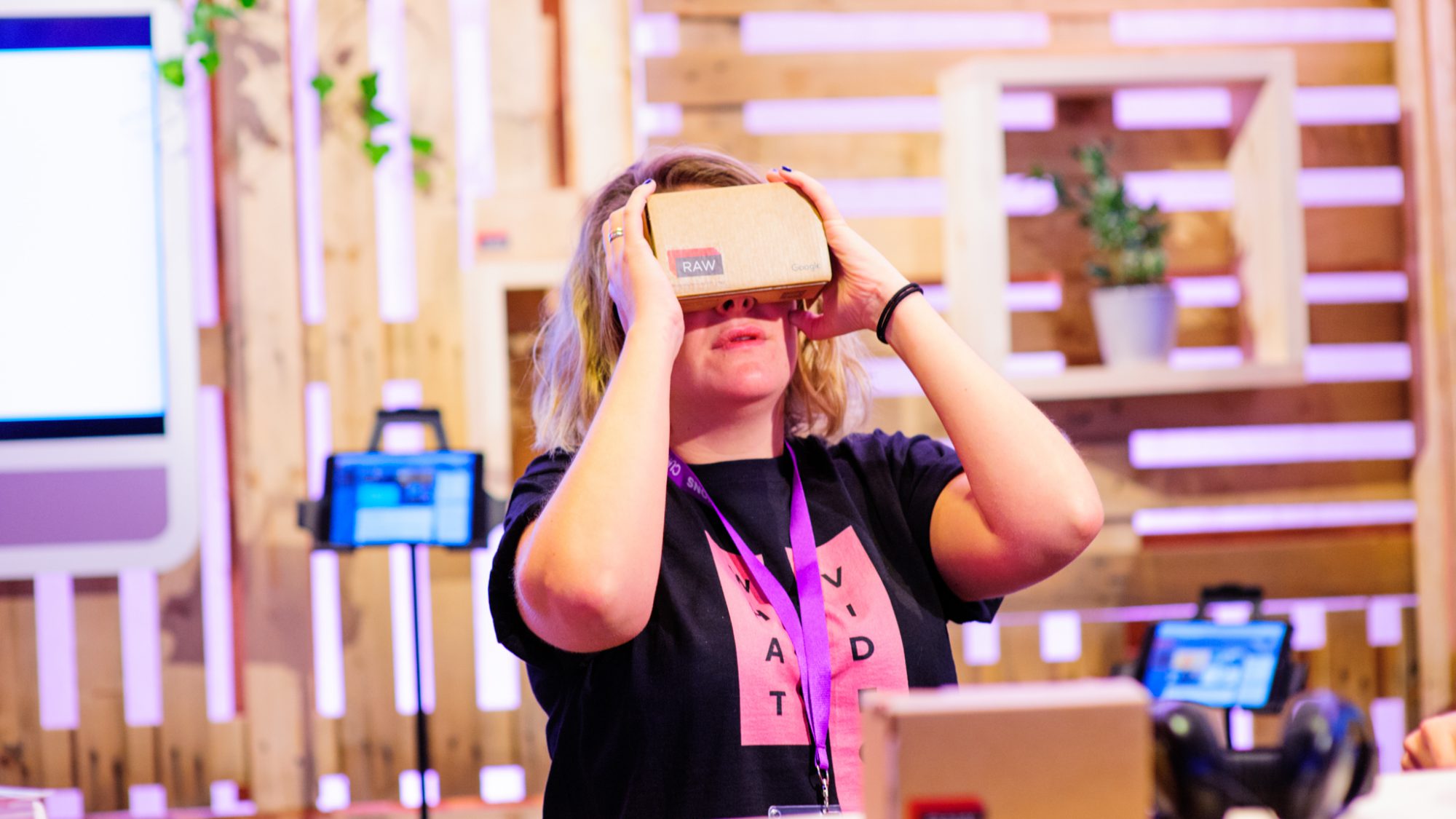

Rob Marks, Studio Manager at RAW Productions, is convinced that it is. But to convince the rest of us, he knew we had to experience it for ourselves.
That’s why, last Friday, the RAW team spent the afternoon exploring the HTC Vive, the world’s most advanced VR headset. We battled zombies, toured an Icelandic park and danced like no-one was watching because that’s exactly what it felt like!
The VR industry is expected to be worth anywhere up to $35 billion in the next five years. Although the technology is relatively new and we’re still in the early stages of adoption, there are four key things happening in 2017 that will change how people use VR and what they use it for.
More users
2016 saw several key players emerge in the mobile VR market – Google Cardboard and the Samsung Gear are the most famous. With their low price tag (the Samsung Gear retails at £99, Google Cardboard is less than £20) and easy set-up, millions of people turned their smartphones into incredibly powerful virtual reality headsets and joined the VR media space.
This year will see a huge increase in the number of VR users. Google Daydream (the better looking successor to Cardboard) is being rolled out across AndroidOS and, like the Samsung Gear, they’re giving the headsets away, encouraging the public to get involved. With less than 50 million users in 2016, analysts predict nearly 100 million users by the end of 2017 and more than 175 million in 2018.
More content
2016 saw some fantastic marketing content come to VR. In the charity sector alone, Unicef, WWF, Cancer Research UK Autism TMI and the Royal National Lifeboat Institution all released innovative VR campaigns that put viewers inside the causes they wanted to promote. All five saw engagement rise, donations increase and featured media coverage because campaigns like these are incredibly powerful and worth talking about.
2017 will see a massive amount of new VR content – some interactive, some passive (i.e. 360 video) – as more people use virtual reality to share stories, promote causes and drive sales. Already this year, Barack Obama organised his farewell speech to be captured in VR marking a first as momentous as Eisenhower giving the first recorded colour television broadcast. With virtual reality documentaries, animations and television series all premiering later this year, it’s clear we haven’t even scratched the surface of what this technology can do.
More technology
Virtual Reality was the star act at CES 2017 (the Consumer Electronics Show in Las Vegas). Headlines trumpeted better resolution picture, better sound, better ways of interacting with the virtual world and marvelled at how VR will transform the ways we work and play. This year, there were three technologies that really stood out as fundamentally changing the way VR can be used.
The first is the range of treadmills that will allow you to run, walk and jump in virtual reality. Currently you are limited to sitting, standing or, if you have the HT Vive, moving around a small pre-defined area. The opportunity to move – really move – in virtual spaces will empower creators and users to develop high-value, explorable worlds.
The second is the range of touch controls (high-fidelity haptic devices) that create the sensation of touch, texture and weight for virtual objects. With rollouts expected later this year, touch controls will further deepen the audience’s immersion the virtual world and can be used for very powerful effects.
Finally, there is a broad improvement in tracking technology (how VR knows where you are and what you’re doing). This is a fundamental shift in how virtual reality fits into real spaces. Intel showed off technology that could scan a room filled with objects and render the environment over the top, meaning your coffee table could become the bridge controls of a spaceship!
More innovation
For me, the most exciting thing about virtual reality is that this is an entirely new art form. It’s like the birth of radio or cinema – there are no limits, no formalities, no formalised industry controlling the market for content. It’s an opportunity for brands and creatives to work together to define the medium. It’s an opportunity to give audiences new perspectives, new environments, new experiences, surprising and delighting them with fresh takes on traditional messages.
As more and more campaigns take the leap into virtual reality, clever content will stand head and shoulders above the rest. Like well-designed websites, creative social media marketing and branded mobile apps before it, VR will soon be the measure of the best in the field.